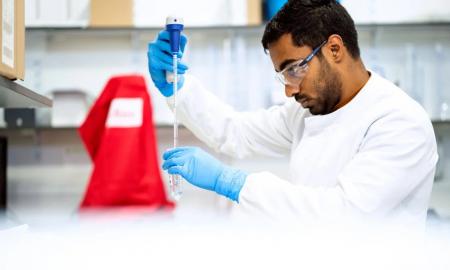Spider veins may not be detrimental to your health, but they can cause people to become incredibly self-conscious. If you’re not familiar, spider veins appear as small red, blue and purple blood vessels on the surface of your skin, usually due to venous inefficiencies.
These veins most commonly appear on the face and legs and can be fairly unsightly. Fortunately, one of the popular services a laser skin clinic can offer you is spider vein removal.
In addition to spider vein removal, a clinic will also typically offer sclerotherapy — a treatment that was developed back in the 1920s to reduce the appearance of spider veins.
Spider veins can be caused by venous issues, standing for long periods of times, excessive weight and other factors — but they tend to be hereditary and are incredibly common. That said, these veins are easily treatable.

Here’s everything you need to know about sclerotherapy, the reputable treatment for reducing spider veins:
What Does it Do?
Sclerotherapy is an effective way to reduce and remove spider veins. In addition to decreasing the appearance of these veins, the treatment also reduces associated symptoms like cramping, itching and aching. The American Society for Aesthetic Plastic Surgery identifies the treatment as a safe procedure.
The quick, non-surgical treatment is incredibly popular; in 2017, 324,000 sclerotherapy procedures were done in the United States alone according to Healthline.
How Does it Work?
Sclerotherapy is the injection of a sclerosing solution that causes spider veins to shrink, collapse and go away entirely. The sclerosing mixture typically includes agents like polidocanol, sodium tetradecyl sulphate and hypertonic saline solutions.
No anesthetic is required for the treatment, as a microneedle is typically used to administer the solution. You can rest easy knowing that the procedure does not cause any discomfort.
Does it Work for Varicose Veins?
Sclerotherapy can be used to treat smaller varicose veins. Large and more prominent varicose veins, however, can be treated by EVLT — another venous laser treatment.
What’s the Recovery Process Like?
The non-invasive procedure doesn’t call for any recovery time, but there are precautions to take after your treatment. After the fact, it’s advised to avoid any intense activity like heavy lifting.
That said, there is nothing keeping you from returning to your normal day to day activities. Side effects are minimal; you will just want to prepare for redness or irritation — this will typically go away after 24 hours.
How Else Can You Reduce Unsightly Veins?
Spider veins can also be removed through a laser treatment. In this procedure, a Vbeam laser is used to direct intense light at the veins, which causes them to collapse. This is an effective option if your spider veins are too small for sclerotherapy to treat them.
Other alternatives include freezing the veins, using heat on the vein for ablation, or surgically closing or removing the vein. Of course, sclerotherapy is the least invasive of these options.
How Long Does it Take?
Sclerotherapy is a non-invasive treatment that typically takes under half an hour. After the procedure, you can return to your daily activities without any concern.
Are There Side Effects
Because sclerotherapy is non-surgical, there are close to no side effects associated with the treatment other than potential redness and swelling, which goes down quickly.






